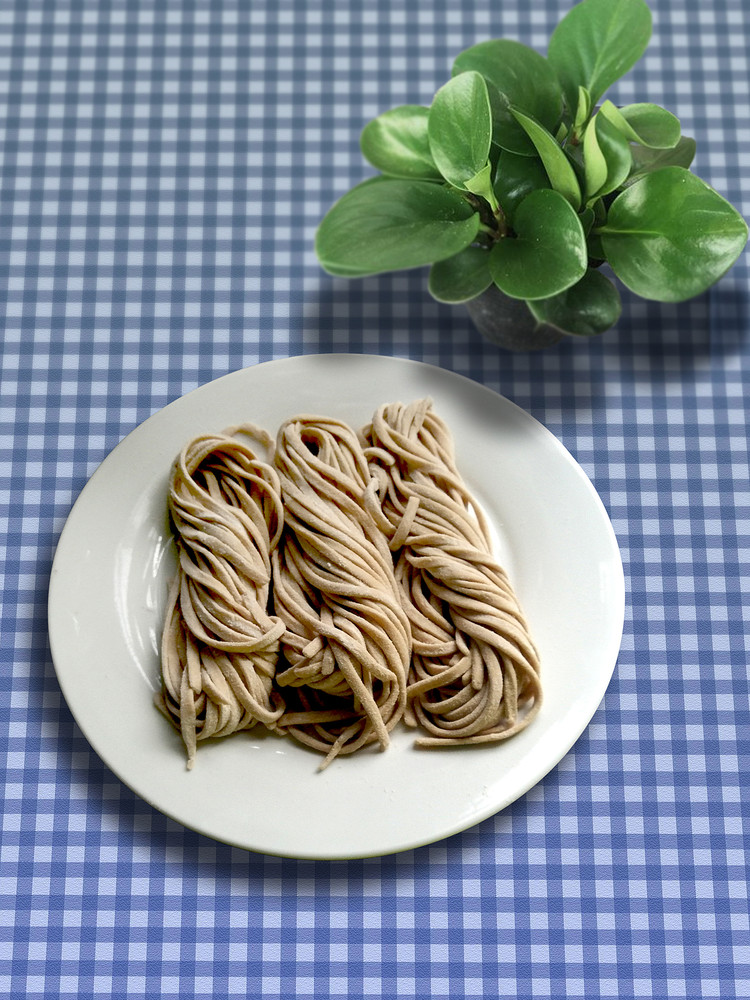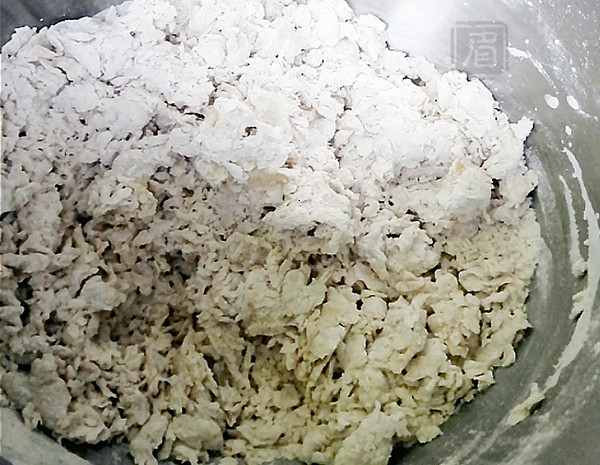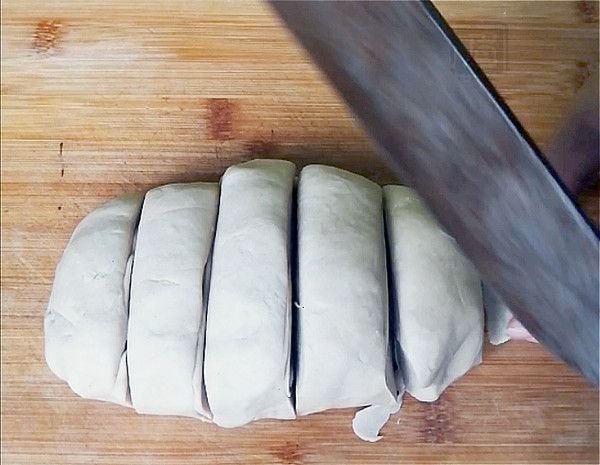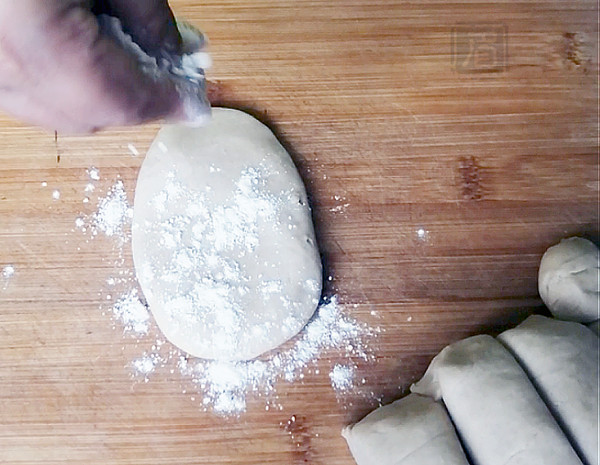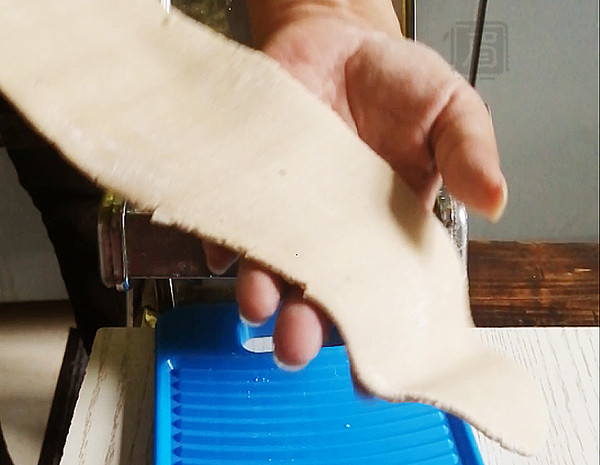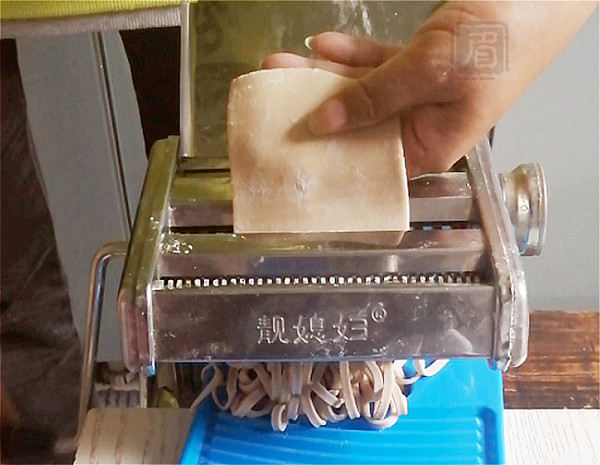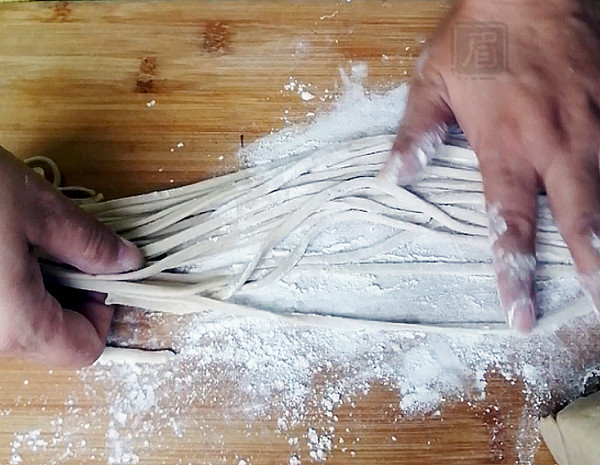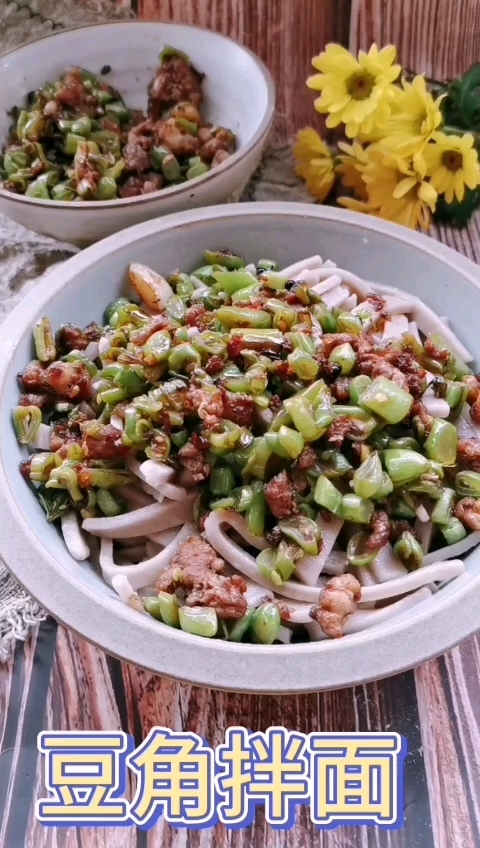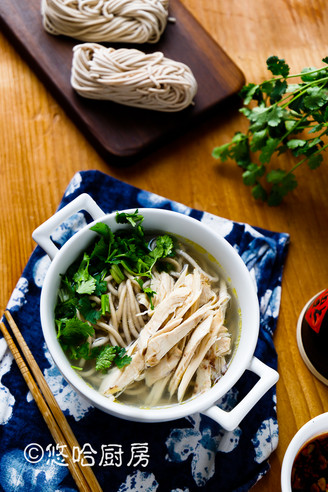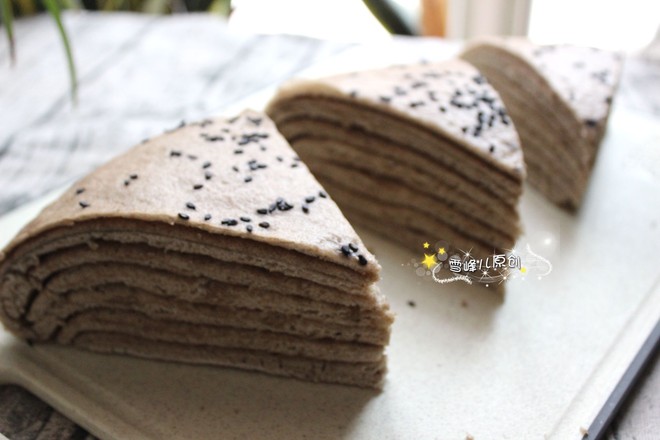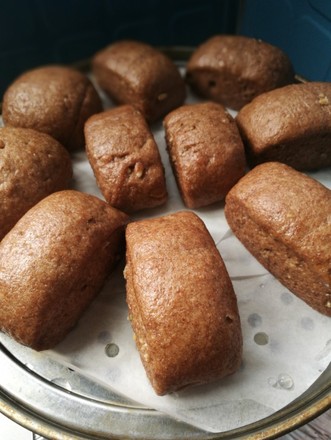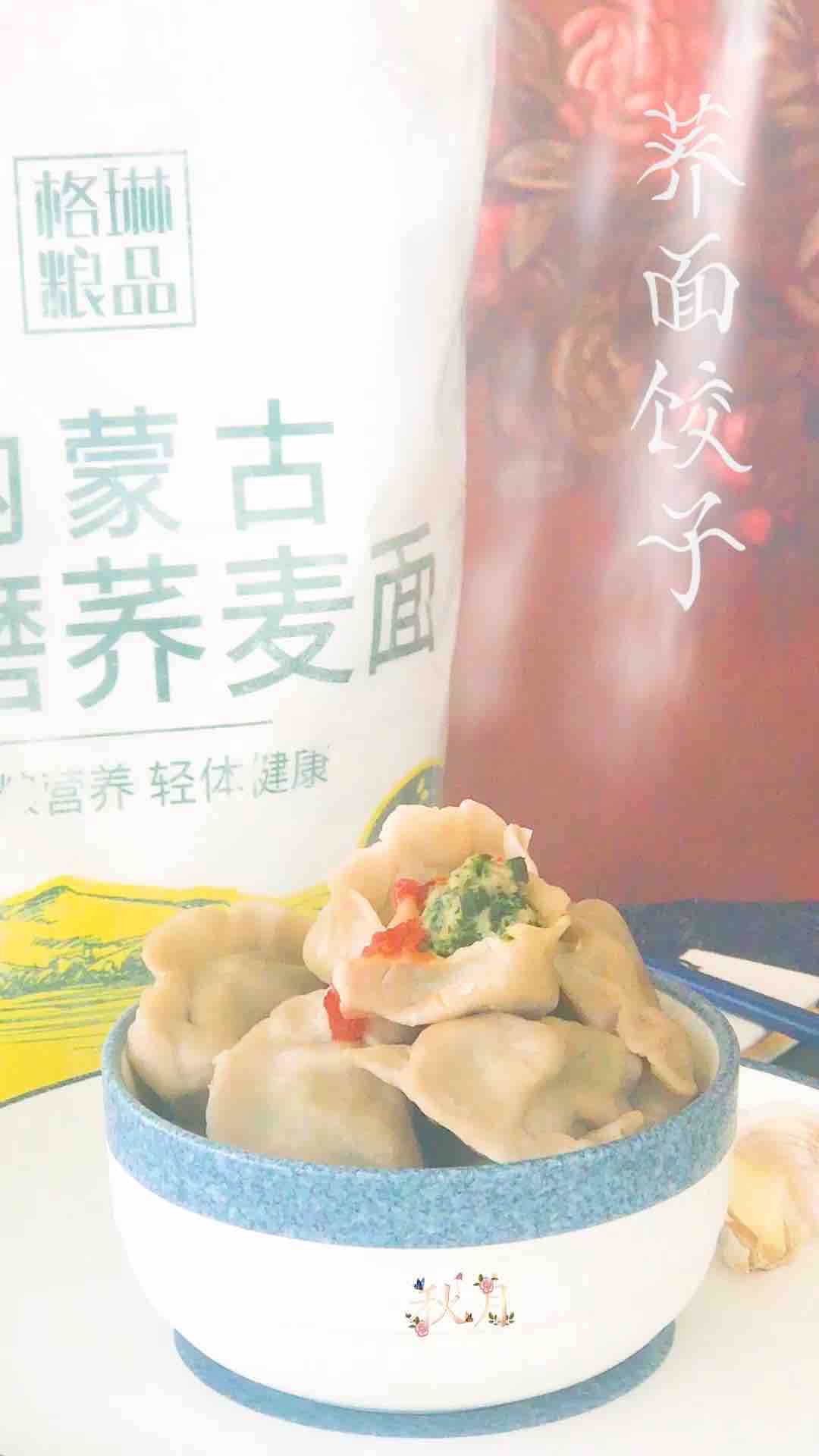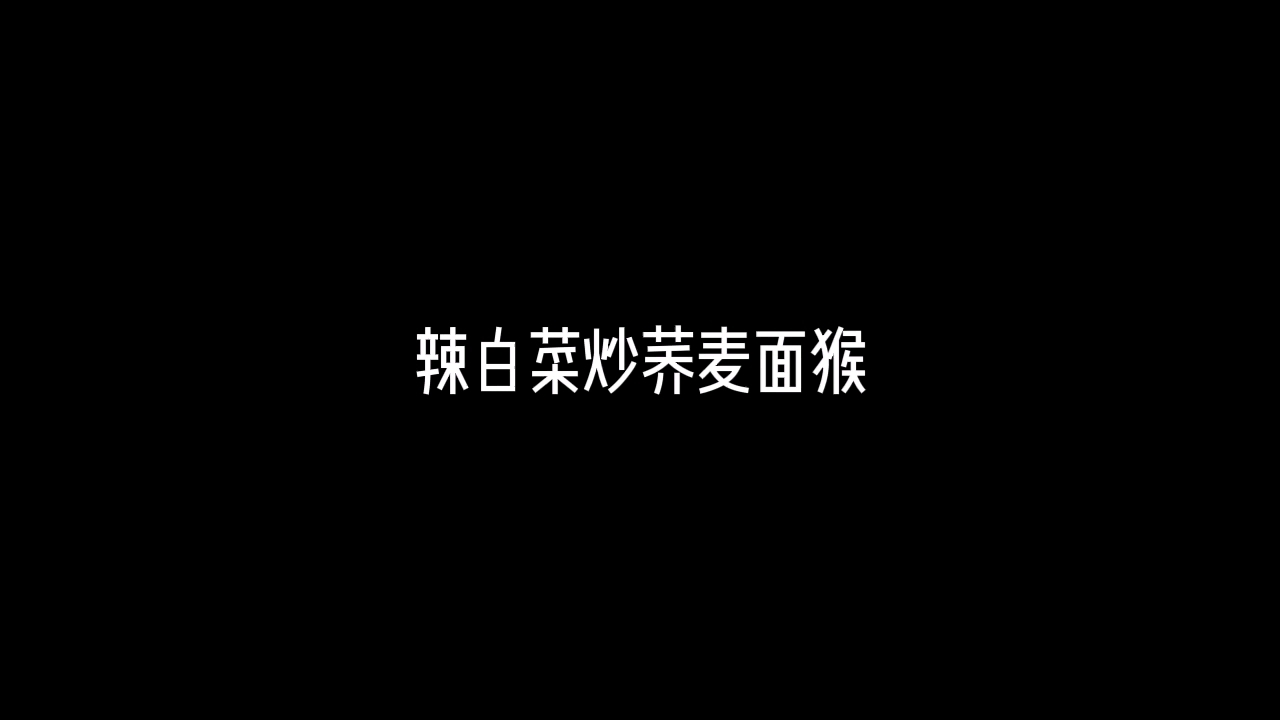Homemade Soba Noodles
1.
Pour buckwheat flour, all-purpose flour, salt, edible baking soda, egg liquid, and water into the mixing bucket of the chef's machine, and set it for 5 minutes at level 1 and 5 minutes at level 3. The liquid (water + egg liquid) should not exceed 50% of the weight of the powder, but the less water, the harder it is to form a dough, and the more it hurts the chef, so I roughly knead it into a dough and cover it with plastic wrap or a damp cloth and let it sit for half an hour. Then knead it into a smooth dough.
2.
Cut the dough into small portions. This is because my noodle press is relatively small, so it is easy to operate in small pieces.
3.
Press the dough flat, about 1cm thick, and dust both sides to prevent sticking.
4.
First use a wide range to press into a dough, fold it in half, and then press it into a dough, press repeatedly 3 to 5 times, and finally press it into a dough with a thickness of about 3 mm. Sprinkle dry powder if it becomes sticky during pressing.
5.
Select the lasagna stall and press it into noodles. Buckwheat flour is not gluten, too fine and easy to break.
6.
Sprinkle the pressed noodles with dry powder to prevent sticking.
7.
Soba noodles are ready.
Tips:
1. This dough is relatively hard, my cook machine is afraid of damage, and the bread machine is even worse. If you knead by hand, it is recommended to knead the dough and let it stand for half an hour before kneading.
2. Regarding the ratio of buckwheat flour to flour, mine is 1:2, which is still easy to break. I suggest less buckwheat flour.
3. The function of pressing the noodles repeatedly is to make the gluten in the all-purpose flour form more, and the noodles are stronger. If you don't have a noodle press, you can roll it into the dough with a rolling pin and then cut it into noodles with a knife.
4. The buckwheat noodles are best cooked immediately. When the noodles are boiled, the water will bubbling and the noodles will be opened. When it boils, pour it into the pot immediately, and then pick it up when it's about to boil. This can reduce noodle breaks.

